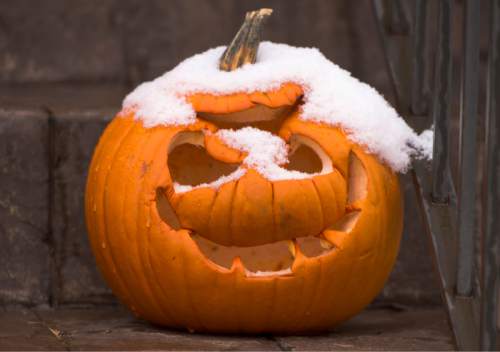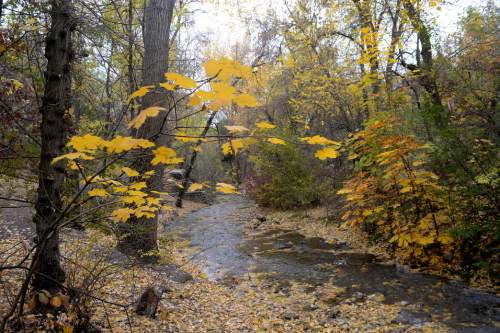This is an archived article that was published on sltrib.com in 2015, and information in the article may be outdated. It is provided only for personal research purposes and may not be reprinted.
After several years of drought, Utah is looking to the coming winter and the El Niño brewing in the Pacific with a sense of expectation. But hydrologists aren't sure what this unusual weather pattern will mean for Utah.
Long-term forecasts issued by the National Oceanic and Atmospheric Administration's Climate Prediction Center call for above-average temperatures through February in northwestern Utah, and above-average precipitation on the state's southern border.
Utah's weather trends have reflected that prediction since the 2015-2016 water year began Oct. 1. Precipitation in the northern portion of the state was below normal last month — the Provo-Utah-Jordan drainage basin, which includes Salt Lake City, was at 58 percent of normal as of Nov. 1; the Weber-Ogden basin came in at 52 percent of normal; and the Bear River basin at 62 percent of normal. At the other end of the state, southwestern Utah sat at 124 percent of normal, and southeastern Utah at 131 percent.
But Brian McInerney, a hydrologist in the Salt Lake City office of the National Weather Service, said it's too early to say whether this trend will hold throughout the winter.
"The math and the science of trying to figure out what will happen falls apart after about seven days," McInerney said.
The long-term forecast focuses primarily on the presence of El Niño, an increasingly strong warm-water current in the Pacific. When this happens, McInerney said, hydrologists expect to see the normal weather patterns in the Western U.S. reverse — the Northwest experiences warm, dry weather, and the Southwest, especially the desert, gets cool, wet weather.
Utah is right in the middle of these two regions, but because this year's El Niño is exceptionally strong, forecasters are calling for the reversed weather trends to extend into Utah — thus the forecast for a warm, dry winter in the north and a cool, wet winter in the south.
McInerney isn't sold on that logic. If you look at past weather data, he said, some of northern Utah's wettest winters on record — 1982 and 1983, as well as 1997 — have coincided with El Niño. That has him feeling a little more optimistic than the hydrologists at NOAA.
"If you're going to wager, you'd bet that we'd be a little wetter," he said.
However, McInerney doesn't put too much stock in the historical data, either, because of the usual strength of the current El Niño trend and because this year's atmospheric conditions won't necessarily be exactly the same as '83 or '92. The bottom line, he said, is that no one can be sure what kind of weather we're going to see in Utah this winter.
So if you're going to place a wager, he said, plan on betting with pocket change, not the whole farm.
Twitter: @EmaPen





